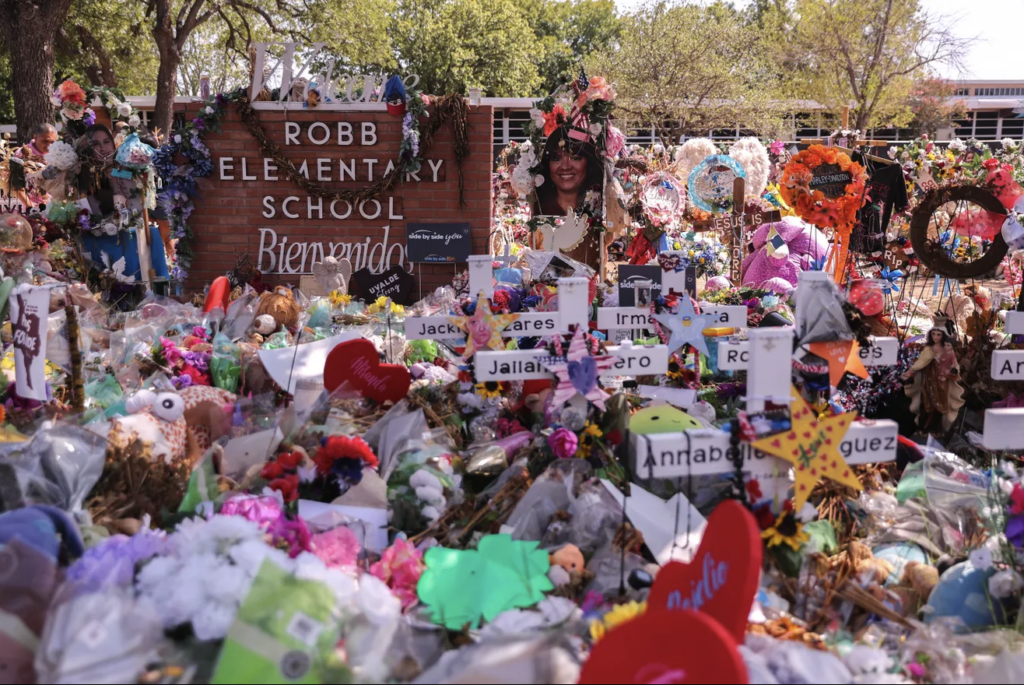
For weeks after one of the nation’s deadliest school shootings, the public and the grieving community of Uvalde were told a story of police heroism … But we began hearing more and more, and learning that that was not the case.
Tony Plohetski (Austin-American Statesman/KVUE-TV)
Weighing the Decision to Release
On May 24, 2022, nineteen children and two teachers were killed in a mass shooting in Uvalde, Texas. In the days after the shooting, investigative reporter Tony Plohetski was the first journalist in the country to obtain video that dramatically changed the public’s understanding of how police responded to that shooting.
After obtaining the video, which contained many disturbing details, Plohetski and his team had to determine if they had a public duty to publish the video and to navigate layers of editorial and ethical decisions in shaping what they would release.
Plohetski’s work not only exposed the truth about the police response in Uvalde – showing police standing outside Uvalde classrooms without intervening for at least 77 minutes – but also revealed how governmental agencies had actively obscured the truth.
Tony Plohetski on His Reporting
Questions
Q1: If you obtained access to a video like the one Plohetski had, how would you go about deciding what to show?
Q2: How should journalists protect minors in their coverage? Does video journalism require additional layers of protection and thus present different ethical obligations?
Q3: The editor’s note at the beginning of the story says: “This exclusive story and video are being made available free of charge as a public service.” Do you agree that sharing this video was a public service?
